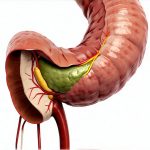Silent reflux, also known as laryngopharyngeal reflux (LPR), is often called “the silent disease” because its symptoms can be so subtle they’re easily dismissed or mistaken for other conditions. Unlike typical heartburn where you experience burning in the chest, LPR presents with a different set of challenges, frequently involving throat-related issues and, importantly, persistent nausea. Many individuals live with this chronic condition unknowingly, attributing their discomfort to allergies, asthma, or even stress. This can lead to delayed diagnosis and prolonged suffering as the underlying cause remains unaddressed. Understanding the nuances of silent reflux is crucial for effective management and improving quality of life.
The key difference between typical gastroesophageal reflux disease (GERD) and LPR lies in where the stomach acid ends up. In GERD, acid primarily irritates the esophagus, causing heartburn and regurgitation. With LPR, however, the acid travels further, reaching the larynx (voice box) and pharynx (throat). This higher trajectory means fewer classic GERD symptoms, but a greater risk of damage to these sensitive upper digestive structures. Nausea is a particularly frustrating symptom because it doesn’t always correlate with the typical acidic taste or burning sensation people associate with reflux. It’s often a more chronic, low-grade nausea that can be debilitating over time. Identifying this pattern is vital for accurate diagnosis and appropriate treatment strategies.
Understanding the Mechanisms of Silent Reflux
Silent reflux isn’t simply about excessive stomach acid; it’s a complex interplay of factors. While acidity plays a role, non-acidic reflux – where digestive enzymes or bile reach the upper airway – can be equally damaging and contribute to symptoms like nausea. This is because these substances are also irritating to the delicate tissues of the throat and larynx. The lower esophageal sphincter (LES), a muscular ring that prevents stomach contents from flowing back up, isn’t always the culprit in LPR as it often is in GERD. In some cases, the upper esophageal sphincter (UES) – which controls the flow between the esophagus and pharynx – may be weak or dysfunctional, allowing reflux to occur even with a functioning LES.
The link between silent reflux and nausea isn’t fully understood, but several theories exist. One suggests that constant irritation of the vagus nerve—a crucial nerve connecting the gut to the brain—by refluxed material can disrupt normal digestive processes and trigger feelings of nausea. Another proposes that the inflammation caused by LPR in the throat and esophagus impacts gastric motility (the movement of food through the digestive system), leading to delayed emptying and subsequent nausea. It’s also possible that the body’s attempt to neutralize the acidic or enzymatic reflux causes a cascade of physiological responses, including nausea as a protective mechanism.
Furthermore, individuals with LPR often experience micro-aspiration, where tiny amounts of stomach contents are inhaled into the lungs during sleep. While not always noticeable, this can contribute to chronic inflammation and irritation, potentially exacerbating nausea and other symptoms. This is why many people with silent reflux report worse symptoms in the morning, or after lying down for extended periods. It’s important to remember that LPR often presents subtly, making diagnosis challenging and requiring a comprehensive evaluation by a healthcare professional. Understanding gallbladder disease symptoms can also help rule out other potential issues.
Nausea as a Primary Symptom of Silent Reflux
Nausea associated with silent reflux differs significantly from nausea caused by food poisoning or viral infections. It’s typically not acute or accompanied by vomiting (although it can be in some cases). Instead, it’s often described as a persistent, low-grade feeling of queasiness that comes and goes, sometimes worsening after meals or when lying down. This chronic nausea can lead to decreased appetite, weight loss, and significant emotional distress. Many people mistakenly believe they have a psychological issue or anxiety, when the root cause is actually LPR.
The nausea isn’t always directly tied to specific foods; it can be triggered by seemingly innocuous activities like talking for extended periods, swallowing frequently, or even just breathing deeply. This makes identifying triggers difficult and adds to the frustration of living with the condition. Importantly, the absence of heartburn doesn’t rule out LPR. In fact, many people with silent reflux never experience heartburn. The focus should be on recognizing the constellation of symptoms—throat clearing, hoarseness, chronic cough, a sensation of something stuck in the throat (globus sensation), and persistent nausea—rather than relying solely on the presence or absence of classic GERD symptoms. It’s important to understand acidic and alkaline reflux as well, since they can present differently.
Diagnosing LPR-related nausea often requires a thorough medical history and physical examination. Doctors may use diagnostic tools like impedance-pH monitoring, which measures both acid and non-acid reflux events over a 24-hour period, to confirm the diagnosis. This is more sophisticated than traditional pH testing, as it can detect all types of reflux, not just acidic ones. The key is recognizing that nausea, when coupled with other LPR symptoms, should prompt investigation into silent reflux as a potential cause. How weather affects your condition can also influence symptom severity.
Identifying Contributing Factors and Triggers
Certain lifestyle factors can significantly worsen silent reflux and contribute to nausea. Dietary choices are paramount; foods known to relax the LES or increase stomach acid production – such as caffeine, alcohol, chocolate, fatty foods, spicy foods, and citrus fruits – should be limited or avoided. Smoking is another major contributor, as it weakens the LES and increases stomach acid. Obesity can also play a role by increasing abdominal pressure and forcing acid upwards.
Stress and anxiety are frequently reported triggers for LPR symptoms, including nausea. This isn’t necessarily because stress causes reflux, but rather that it can exacerbate existing symptoms. Stress often leads to changes in eating habits, increased alcohol consumption, and disrupted sleep patterns, all of which can worsen reflux. Managing stress through techniques like meditation, yoga, or deep breathing exercises can be helpful in minimizing symptoms. Recognizing symptoms of gallbladder infection is also important to rule out other digestive issues.
- Here’s a list of potential triggers:
- Caffeine & Alcohol
- Fatty/Fried Foods
- Spicy Foods
- Citrus Fruits & Tomatoes
- Chocolate & Mint
- Smoking
- Stress and Anxiety
- Large meals, especially before bed
- Tight clothing
Managing Silent Reflux and Reducing Nausea
Managing silent reflux typically involves a multi-faceted approach. Lifestyle modifications are often the first line of defense. This includes dietary changes (as discussed above), weight management if necessary, smoking cessation, elevating the head of your bed by 6-8 inches to prevent nighttime reflux, and avoiding eating within 3 hours of bedtime. Smaller, more frequent meals can also help reduce stomach pressure.
Medications commonly used for GERD – such as proton pump inhibitors (PPIs) and H2 receptor antagonists – may be prescribed to reduce stomach acid production, but their effectiveness in LPR is sometimes limited due to the role of non-acid reflux. Alginates, which form a protective barrier over the stomach contents, can be more helpful in neutralizing both acidic and non-acidic reflux. Prokinetic agents, which help speed up gastric emptying, may also be used to reduce nausea and improve digestive function. Understanding how symptoms vary throughout the day can aid in management.
It’s essential to work closely with a healthcare professional to develop a personalized treatment plan that addresses your specific symptoms and needs. Self-treating can be dangerous and may mask underlying conditions. Remember, silent reflux is often a chronic condition requiring ongoing management. Consistent adherence to lifestyle modifications and prescribed medications is crucial for minimizing nausea and improving quality of life. If symptoms persist despite treatment, further investigation may be necessary to rule out other potential causes. It’s also helpful to know the link between silent reflux and bloating, which are often connected. Finally, if you suspect LPR, understanding what is silent reflux can help you advocate for appropriate diagnosis and treatment.


















